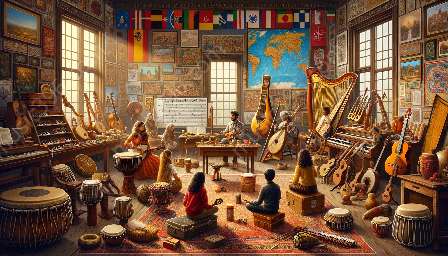Exploring the art of orchestration in jazz and popular music unveils the intricate blend of arranging and orchestration, contributing to the rich tapestry of music education.
Understanding Orchestration
Orchestration in music is the art of assigning different musical parts to various instruments, creating a harmonious blend of sounds and enhancing the overall quality of a composition. In jazz and popular music, orchestration plays a pivotal role in bringing compositions to life.
Historical Significance
The history of orchestration in jazz and popular music dates back to the early 20th century, with notable figures like Duke Ellington and George Gershwin revolutionizing the use of instruments in their compositions. The innovative orchestration techniques employed by these pioneers set the stage for future developments in music arranging.
Role of Arranging and Orchestration
Arranging and orchestration are closely interlinked, with the former focusing on the organization and adaptation of a piece of music for different instruments or voices, while the latter is concerned with the technical aspects of assigning these musical parts to specific instruments, taking into account their tonal qualities and capabilities.
Techniques and Creative Processes
Incorporating different techniques such as voicing, harmonization, and instrumentation, orchestrators in jazz and popular music create compelling arrangements that captivate audiences and provide an immersive listening experience. The creative process involves a deep understanding of musical characteristics and a keen sense of orchestral color and texture.
Impacts on Music Education
The study of orchestration in jazz and popular music forms an integral part of music education, offering students a comprehensive insight into the intricate art of blending instruments and voices to produce captivating compositions. By exploring historical and contemporary orchestration practices, students gain an appreciation for the evolution and diversity of musical arrangements.















